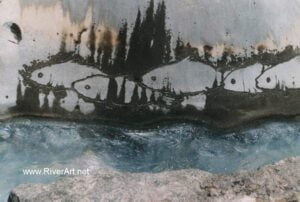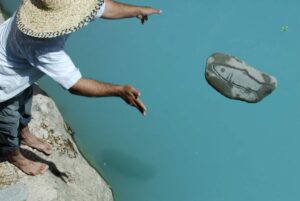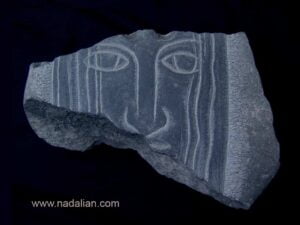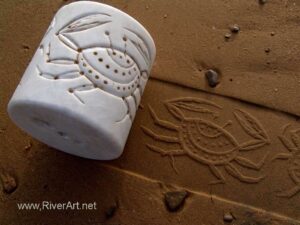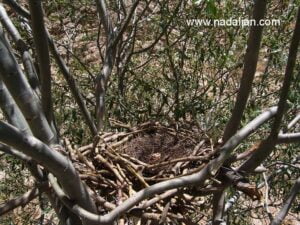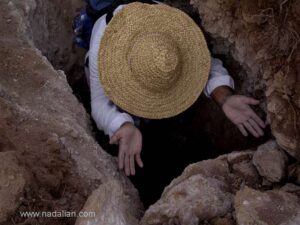Ahmad Nadalian is known for his environmental art projects in numerous countries across the globe. These carvings mostly show images of fish, crabs, snakes, animals, human hands, human feet and even signs of the zodiac.
His River Art project is on site environmental sculpture and as interactive as one can get. This place for sculpture has become a sculpture garden you walk through and where nature’s forms, topography, and the river itself become a living canvas in three dimensions. The artist’s interventions are modest, and reflect on ancient historical symbols drawn from Persian culture. With his carving in natural sites, Nadalian has worked in a living ecology to create environmental sculptures that never dominate their surrounds.
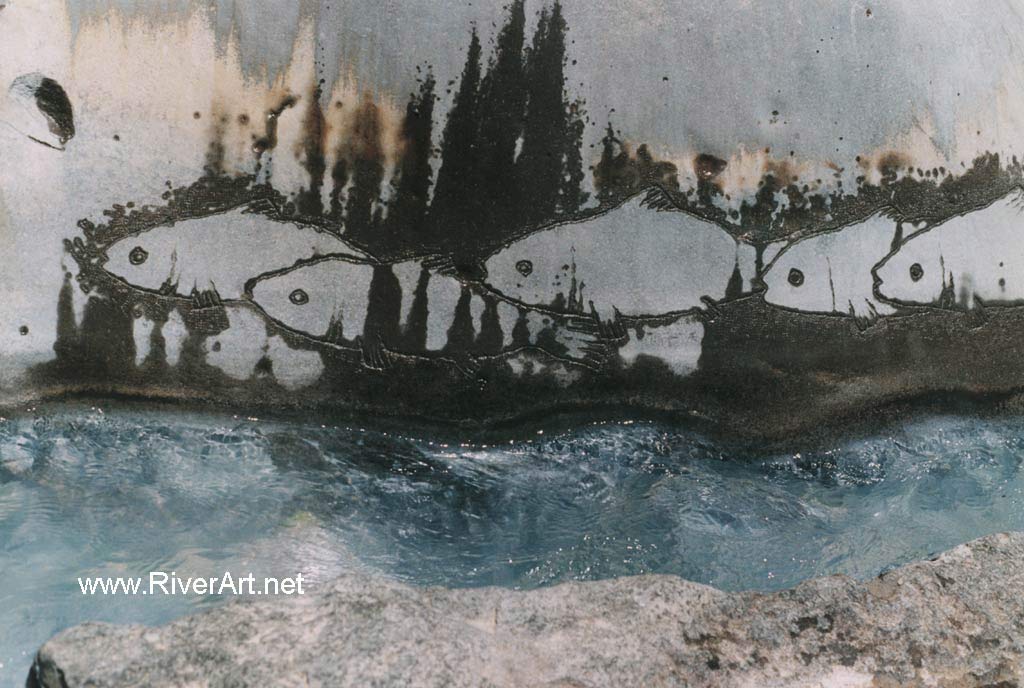
As Nadalian says, “When I work in a natural setting, I try to preserve nature as a whole, to make as few overall and overarching changes as possible. This may be seen as respect for the beauties of nature. But this is also how the carvings gain their rough-hewn texture, and there is a harmony between the carved rock and its surroundings. I want my carvings to be small symbols, for people to stumble upon them, to realize that there are things to discover and understand in nature.”
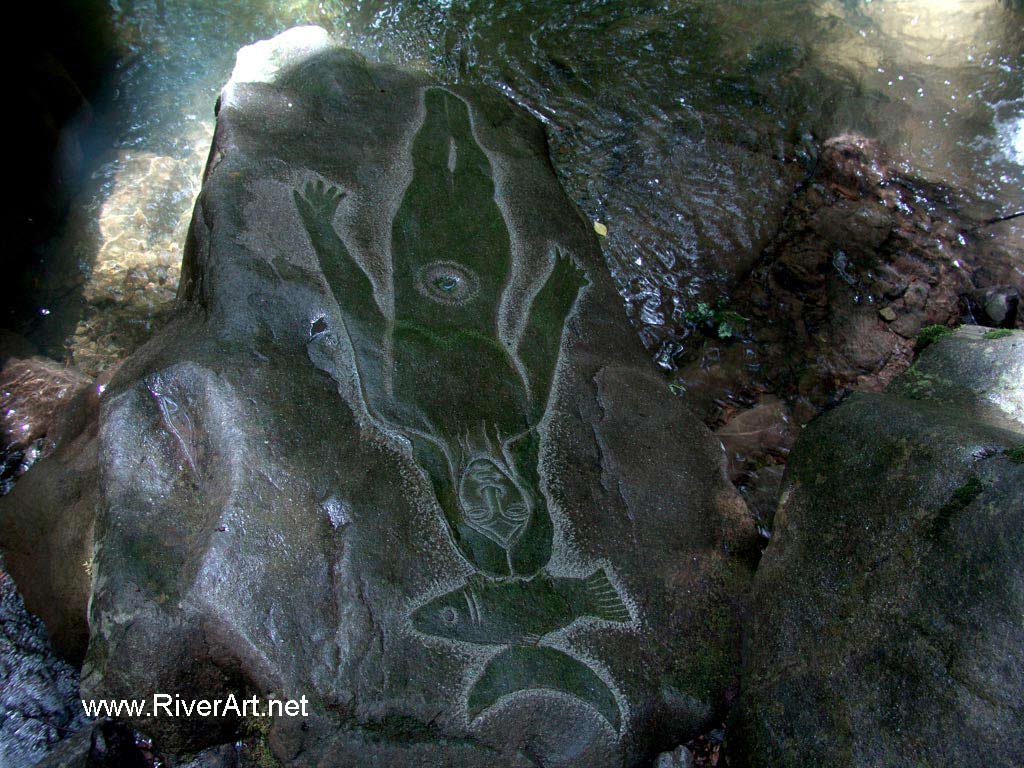
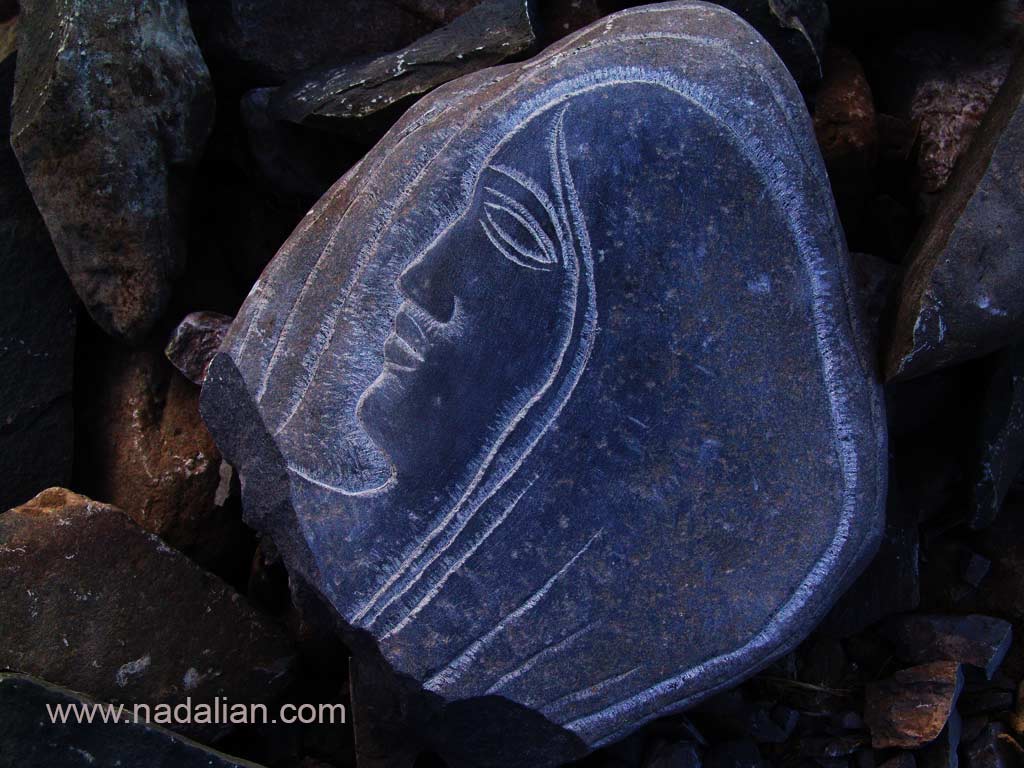
In his homeland, many of Nadalian’s works have been ignored and distorted. Our environments are increasingly threatened by human development and disregard for the sacred in the ordinary. Nature is a living system we are a part of, Nadalian’s visionary art affirms. Over the course of his travels to different parts of the world, Nadalian has also hidden his carved rocks under the earth or dropped stones with imaginary fish into rivers, canals, reservoirs and seas.
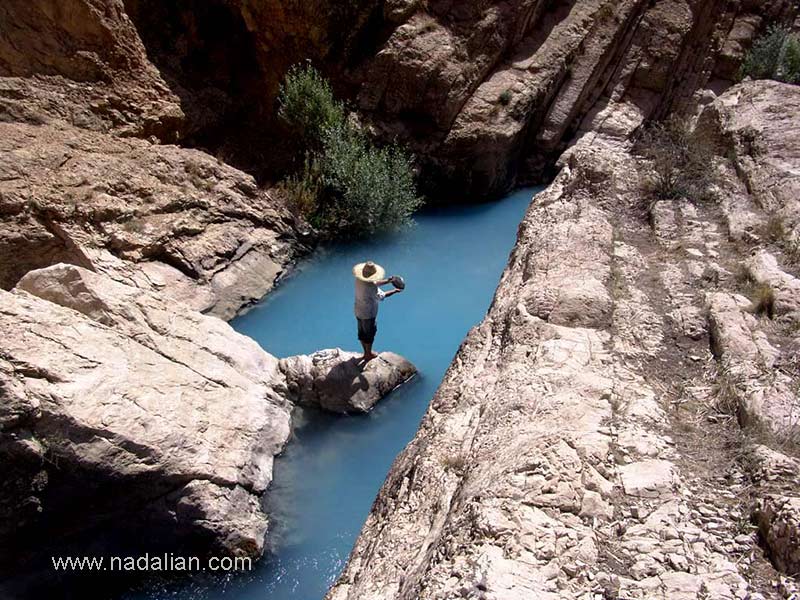
He comments “These hidden elements – my fish – are alive and will live a secret life to be reincarnated again one day. In documenting the physical process of releasing the fish into water, I came upon a new horizon: the way water accepts and affects the art. The shapes created by the splash of a stone breaking the water’s surface are amazing. It could be “water sculpture”! For me, fish is the symbol of man’s struggle for survival and his wandering soul in search of happiness.”
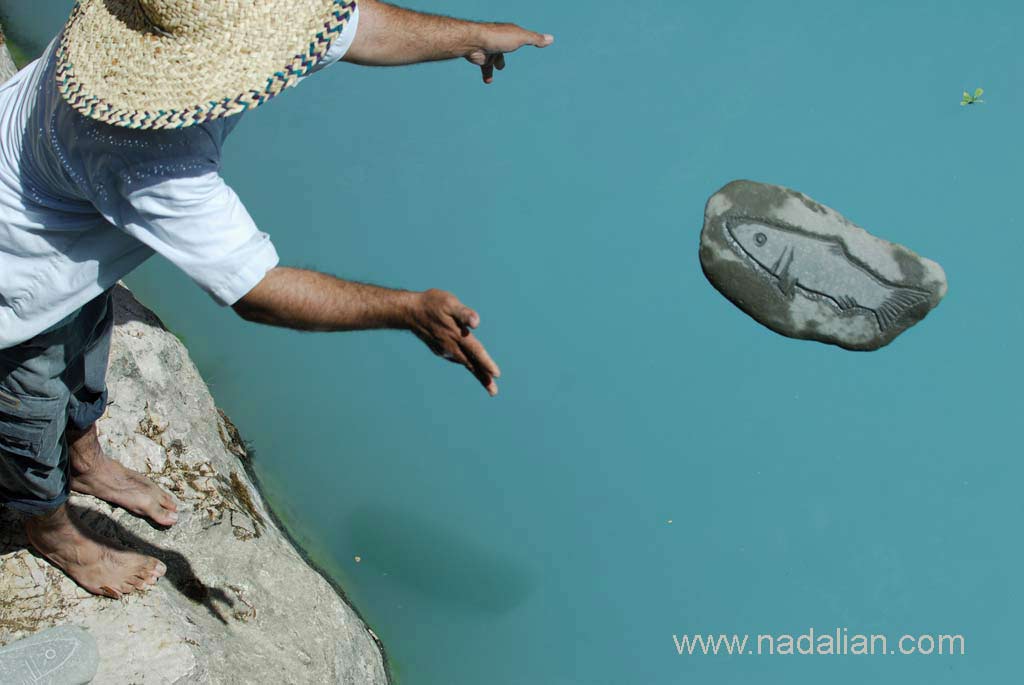
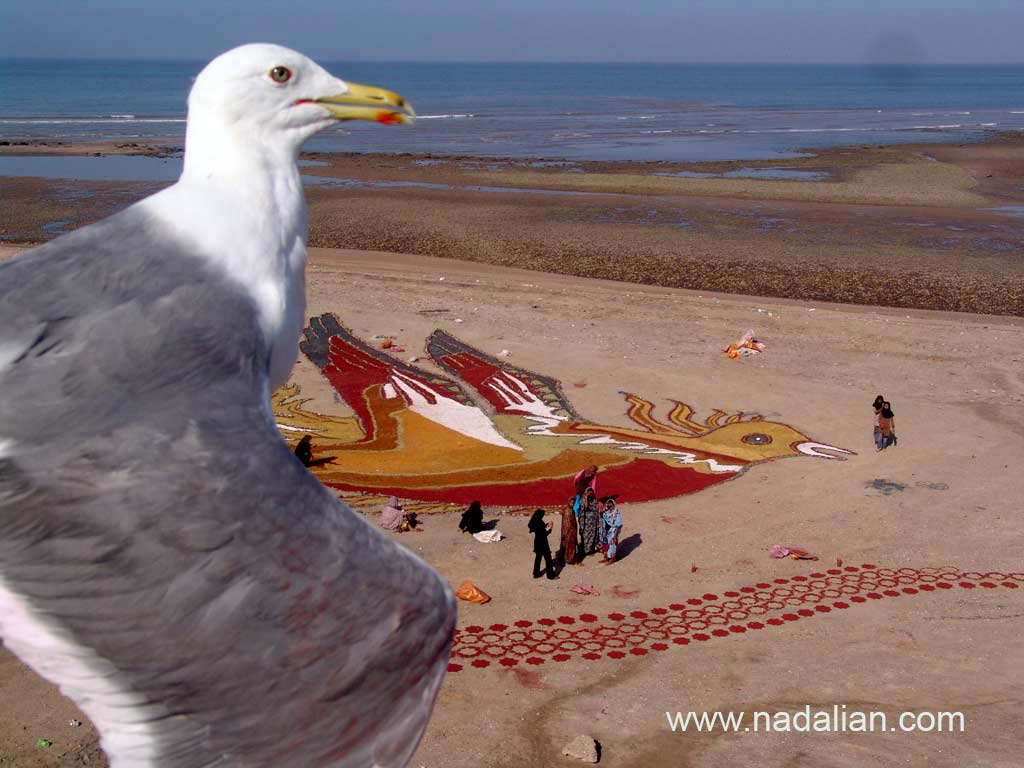
In spring and summer Nadalian lives in a mountainous village near Polour in the north of Iran and in the colder months he moves south to Island of Qeshm and Hormoz in the Persian Gulf. He is constantly searching for new materials that can be sourced from nature and the land to create his art. He first suggested the use of colored earth as a material for environmental artworks in 2007, when he was director of a workshop in Hormoz Island. After this event he used organic material sourced from nature in many of his environmental installations and for body art. Recycled clothing, shells, local materials, stone and other materials from colored earth enabled the women who live in the islands of southern Iran to produce art and paintings, even wall murals without shopping for essential art materials, instead finding them where they live. Now for reasons of conservation the use of colored earth and materials from the environment are less than before so there is less damage to the environment. Careful consideration occurs before our organic material, especially the rare local colored earth are used.
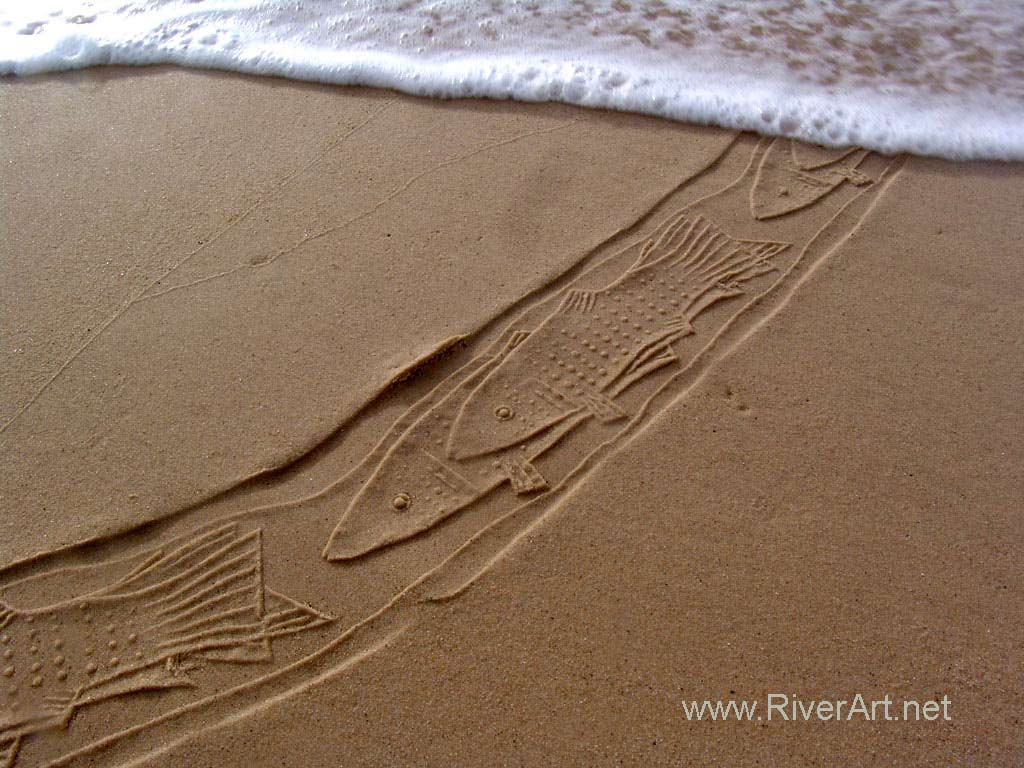
For Nadalian, the best alternative to using colored soil is printing his cylindrical seals on the wide sandy beaches of the Hormoz Island. These sand drawing actions occur with the carving of cylinders in stone. Using these cylinders, or even found plastic bottles to “print on sand”, Nadalian creates ephemeral, impermanent patterns on the sand. These images of fish, snakes, birds, and other forms, reflect on the human interaction, even imposition on nature.
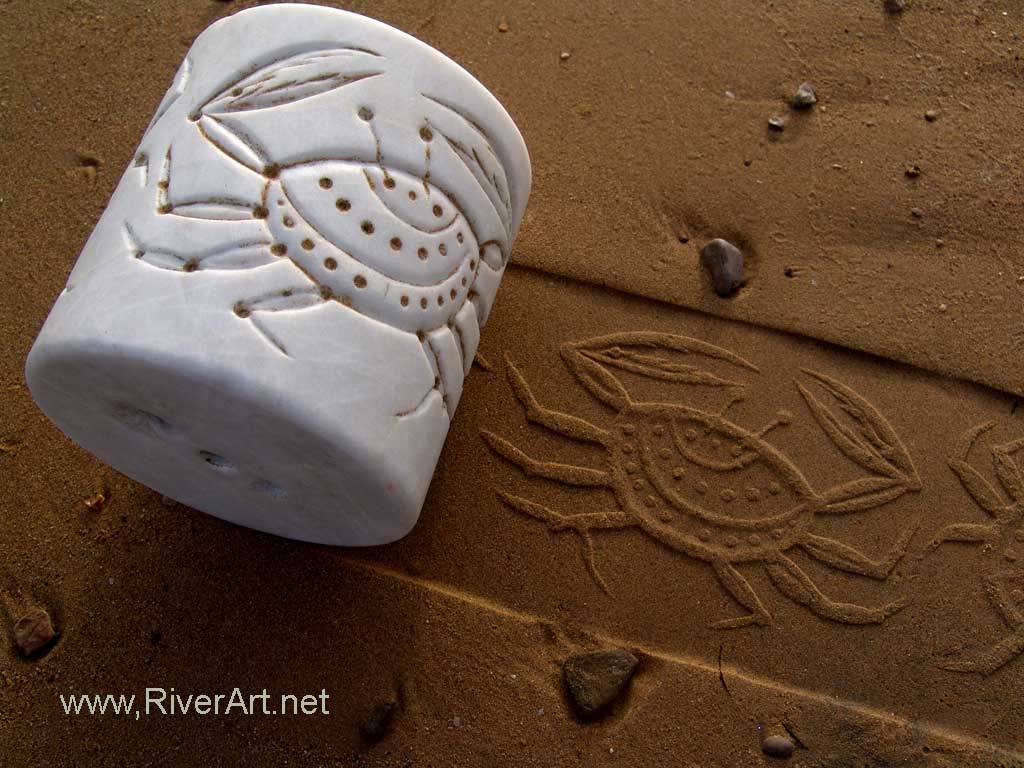
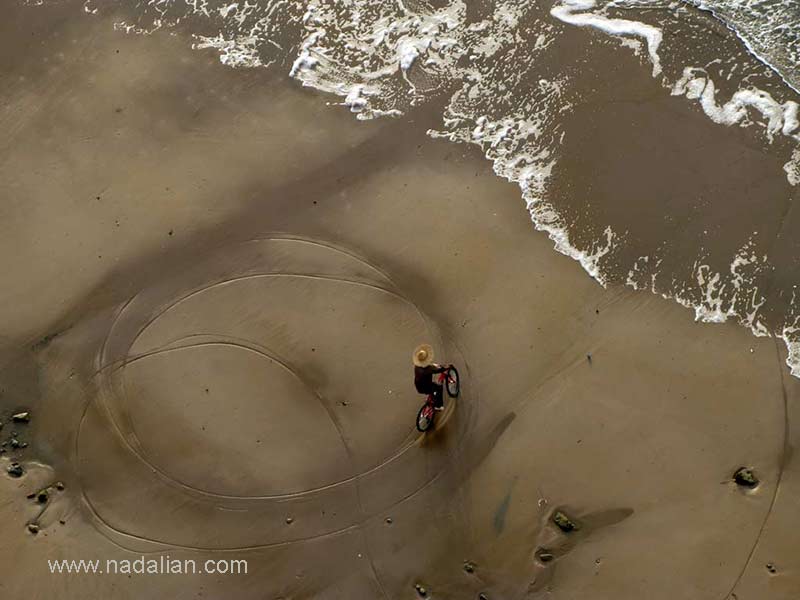
In the same way, Nadalian’s bicycle has become a moving sculpture that “writes” images into the sand. “World Peace, Clean Environment” have been affixed into the rubber bicycle tires, and after he ride his bicycle on the sand leaves his message. The sand patterns and images that Nadalian creates by cylinder seals or riding his bicycle on the sand of the beach are eventually cleaned by the tide or alternatively the wind and weather cause them to vanish.
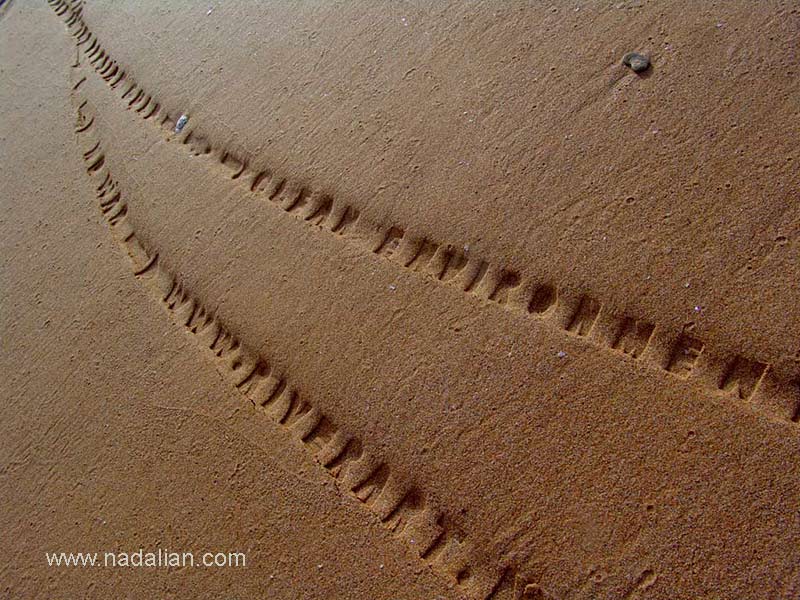
There are many definitions for environmental art. In some of them we find contradictions. My definition of environmental art is art in which artists in the natural environment utilize natural elements to create their art works, which are a mostly a type of site specific installation. Sometimes artists may bring elements or objects and install them in nature. Most contemporary environmental artists are over sensitive towards the ecological themes. In many cases environmental art is mixed with body art and performance.
Artists in nature or even within a city environment may utilize objects or even garbage that people leave within their surroundings to create art works.
Environmental art for me is on the one hand very personal, and on the other hand collaborative. In any area or region where I work, I collaborate with local communities, and local rituals have a reflection on my work. In many cases audiences are not passive observers of my art, and may be interactive. I don’t want to impose a single narrative.
In my view the process of making art is important. So how I live in nature and how I discover my way and how I educate myself is more important than the final result. Environmental art for me has a still bigger meaning. In my art, besides nature, I consider the cultural, social and political environment too. In many cases they are directly or indirectly linked together. In the world in which we live it is difficult not to think exclusively of the natural environment or animals. If humans aren’t higher than another living creature, then we are at least equal. Some environmentalists think and work for the right of every creature except the human being. They are worried about wolves, foxes, dogs and cats, but they are blind to the deaths of thousands people per day. I think in nature, humans and all living creatures face the same crises. So in my art I consider all of them.
Environmental Art related post
Views: 194

 فارسی
فارسی
